12 Courageous Women Who Fought for India’s Freedom|
Story of 12 Real Life Brave Heroines of India's Independence: Women who never accepted the slavery of British rule.
From Rani Lakshmi Bai to Sarojini Naidu, India has a long history of courageous women who have fought for freedom, justice, and equality. Hundreds of female freedom fighters in India have made immense contributions to the country’s independence. Some are widely known for their leadership, bravery, and sacrifice, while others are unsung heroines who deserve more recognition and appreciation. Here are 12 examples of women who fought for India’s freedom in different ways:
[1]
Rani Chennamma: A brave queen who fought against the British.(1778-1829)
Rani Chennamma was the queen of a place called Kittur in India. He was born in 1778 in a small village called Kakati in Karnataka. When she was young she learned to shoot arrows, fight with swords and ride horses. She was very brave and strong.
When she was 15, she married Mallasarja Desai, the king of Kittur. They had a son, but he died when he was young. He adopted another boy, Shivalingappa, and made him the next king. But the British East India Company did not agree to this. They wanted to capture Kittur under a rule called the Harap policy.
Rani Chennamma did not want to give her land to the British. He fought against them in 1824. She was one of the first rulers of India to rebel against the British. She won the first battle but lost the second. The British caught him and put him in a prison called Bailhongal Fort. He died there in 1829.
Rani Chennamma is remembered as a heroine and patriot in Karnataka and India. He inspired many others to fight for freedom from the British.
[2]
Zansi Ki Rani Laxmibai: A brave queen and a freedom fighter.(1835-1858)
Chilhood of Lakshmi Bai.
Lakshmibai was born in Varanasi, a city in India. Her original name was Manikarnika. His mother was Bhagirathibai and her father was Moropant Tambe. His father used to work for a Maratha ruler named Bajirao. His mother was educated, intelligent, and religious. When his mother died, his father took him with him to the court of Bajirao's successor, Peshwa Bajirao II. There people called her "Chhabili", which means "playful" and "beautiful". He learned about scriptures and weapons in his childhood itself.
Marriage and Adoption.
She married Gangadhar Rao Newalkar, the king of the central Indian state of Jhansi. After marriage, she became the Rani of Jhansi and changed her name to Lakshmibai. In September 1851 she gave birth to a son, but he died four months later. In 1853 her husband's health became very bad. He adopted a boy named Damodar Rao as his son and successor. He died on 21 November 1853.
Struggle with the British.
The British wanted to occupy Jhansi as part of their policy of annexing those states which had no natural heirs. He filed a court case against Damodar Rao, but he lost. He confiscated the state treasury and ordered the queen's annual income to be reduced by paying off her husband's debts. He also asked him to leave the Jhansi fort and move to a palace in the city. But Laxmibai did not give up and decided to protect Jhansi at any cost.
Revolt of 1857.
Jhansi became one of the main centers of the Revolt of 1857, a rebellion against British rule in India. Lakshmibai strengthened the defenses of Jhansi and formed a volunteer army. He recruited women in this army and trained them for war. Common people also supported their struggle. He gave Jhalkari Bai, who looked like him, an important role in his army.
Siege of Jhansi.
In September and October 1857, Jhansi was attacked by the kings of two neighboring states, Orchha and Datia. Lakshmibai successfully fought them. In January 1858, the British army marched towards Jhansi and in March besieged the city. After two weeks of fighting, British forces captured the city. But Lakshmibai managed to escape from the British along with Damodar Rao. She left Jhansi and reached Kalpi, where she met Tatya Tope, another rebel leader.
Battle of Gwalior
Lakshmibai and Tatya Tope joined forces and captured a fort in Gwalior with the help of some rebel soldiers from Gwalior. Ali Bahadur II, a descendant of Bajirao I, also supported Laxmibai and joined her in this war. He sent her a rakhi, a symbol of brotherhood. Lakshmibai died on 18 June 1858 fighting the British forces at Kota ki Sarai near Gwalior.
Legacy of Laxmibai.
British General Hugh Rose praised Lakshmibai's beauty, cleverness, and courage in the war report. He also said that she was the most dangerous of the rebel leaders. Lakshmibai is remembered as one of the bravest women and freedom fighters in Indian history.
[3]
Matangini Hazra: A freedom fighter and martyr.(1870-1942)
Who was Matangini Hazra?
Matangini Hazra was an Indian woman who fought for India's independence from British rule. She wanted India to become an independent country.
How did he fight for freedom?
She joined a group of volunteers who were trained to fight with weapons. These were called Vidyut Vahini. He worked with the Samar Parishad, a council that planned the freedom struggle.
What did he do on 29 September 1942?
That day, he led one of five groups of volunteers to attack the Tamluk police station. Tamluk was a town in the Midnapore district of Bengal. The police station was controlled by the British Indian Police. She wanted to capture the police station and hoist the Indian flag there.
How did she die?
He was shot in front of the police station by the British Indian police. She died holding the Indian flag in her hand. She was the first person to die in the Quit India Movement in Midnapore. The Quit India Movement was a mass protest against British rule in 1942.
What did people call him?
She was a follower of Mahatma Gandhi, the leader of the Indian independence movement. She believed in his principles of non-violence and truth. People called her Gandhi Buri, which in Bengali means "old woman Gandhi".
[4]
Sarla Devi Choudhurani: A woman leader who fought for India's independence and women's education.(1872-1945)
Who was Sarla Devi?
Sarla Devi Choudhurani was an Indian woman who worked for the education and rights of women in India. She started Bharat Stree Mahamandal in 1910 in Allahabad. It was the first women's group in India that worked across the country. One of the main goals of the group was to help women go to school and learn new things. The group had several offices in various cities such as Lahore, Allahabad, Delhi, Karachi, Amritsar, Hyderabad, Kanpur, Bankura, Hazaribagh, Midnapore and Kolkata.
Sarla Devi's family
Sarala Devi was born on September 9, 1872 in Kolkata. His father Jankinath Ghoshal was a leader of the Bengal Congress. His mother Swarnakumari Devi was a famous writer. His mother was the daughter of Debendranath Tagore, the leader of the Brahmo religion. His mother was also the sister of the famous poet Rabindranath Tagore. Hiranmayee, an elder sister of Sarala Devi, was also a writer and started a home for widows. Sarala Devi's family followed Brahmo Dharma, which was started by Ram Mohan Roy and later led by Sarala's grandfather Debendranath Tagore.
Role of Sarla Devi in freedom struggle
In 1905 Sarala Devi married lawyer, journalist and nationalist leader Rambhuj Dutt Chowdhary. He followed the Arya Samaj religion, which was started by Swami Dayanand Saraswati. After marriage Sarla Devi and her husband moved to Punjab. There, she helped her husband write and edit a newspaper called Hindustan, which spoke out against British rule in India. When her husband was arrested for his involvement in the Non-Cooperation Movement, Mahatma Gandhi came to stay at her home in Lahore. Gandhiji used her poems and writings in his speeches and journals. In February 1920, a magazine published some of Gandhi's letters about his joining a club called the Lahore Curtain Club. After her husband's arrest, she traveled across India with Gandhi to tell people to use Khadi cloth.
last days of sarla devi
After her husband's death in 1923, Sarala Devi returned to Kolkata and again from 1924 to 1926 was the editor of Bharati Patrika. She started Shiksha Sadan, a school for girls in Kolkata in 1930. In 1935 she left public life and joined a religion. , Bijoy Krishna Chattopadhyay of Howrah was his spiritual teacher.
She died on August 18, 1945 in Kolkata.
[5]
Basanti Devi.(1880-1974)
Basanti Devi was the wife of revolutionary Desh Bandhu Chitranjan Das, and she struggled so hard for the liberation of India. After the arrest of Chitranjan Das in 1921 and his death in 1925, Basanti Devi became active in the liberation movement of India. She had prominently participated in the *Caliphate Movement and the noncooperation movement with Gandhiji. She had pioneered an NGO named 'Nari Karma Mandir.' She was very active in social and political activities and remained active also even after the independence. She received the Padma Bhushan in 1973 for her valuable part in the liberation movement.
After a year, she passed away at the age of 94, in 1974, in Calicut.
[6]
Perin Ben Captain.(1888-1958)
Perin Ben Captain, The granddaughter of the famous leader Dadabhai Naoroji, was born in Mandavi, Kutch. Ardeshar, her father, was the eldest son of Dadabhai Naoroji, who was a doctor, and Veerbhai, her mother, was a homemaker. Perin joined with Savarkar and Madam Cama, both revolutionary leaders, who were the natives of Mandvi and were settled in London for the freedom struggle.
In 1919, she had a chance to meet Gandhiji and joined his mission. She was the first woman president of the Mumbai State Congress Committee in 1930 and received the Padma Shri award in 1954.
[7]
'MAA' Rama Devi.(1899-1985)
Ramadevi was a well-known freedom fighter from Orissa. People call her "MAA(Mother)' with love. She had to marry at the age of just 15. She had been active in the Freedom Fight Movement in 1921 with her husband. She had been under the deep impact of the perception of Gandhiji. She had participated with enthusiasm in the noncooperation movement of Gandhiji against British rule. She was also impressed by the perceptions of Jayprakash Narayan and Shree Vinobha Bhave. She strongly followed their idealogy, traveled to remote rural areas to spread their messages, and did basic services.
[8]
Durgavati Devi Vahora.(1907-1999)
Durgavati Devi had participated in the freedom movement at an early age. Merely at 11 years of age, she had to marry withBhagavati Charan Vahore, a revolutionist. The great revolutionist Bhagat Sinh and Sukhdeo call her 'Bhabhi.'She was jailed for three years for the attempt to attack the British officer Malcolm Helly.
She had sold out her jewelry worth 3000 rupees to save the Bhagatsinh. She helped Baghat Sinh to escape by disguising herself.
She lived up to 92 years of age in Ghaziabad, in independence India.
[9]
Aruna Asaf Ali.(1909-1996)
Aruna Asaf Ali is still remembered for her brave action in the Quit India Movement of 1942, where she showed great courage by hoisting the Indian flag in 1942.
She became a member of the Indian National Congress and started participating in public meetings during the Dandi Satyagraha. In late 1942, she started participating in grassroots activities and again became active in the independence movement.
On behalf of independent India, Asaf Ali, her husband, was made the first Indian ambassador to America. Even after independence, Arunaji was active in politics and became the first mayor of Delhi.
She passed away in 1996.
[10]
Pritilata Waddedar.(1911-1932)
Pritilata Waddedar was a Bengali woman who fought for the freedom of India from Britain. She was born on 5 May 1911 in a place called Chittagong, which is now in Bangladesh. She studied hard and became a teacher. She joined a group of revolutionists who wanted to end British rule in India. They attacked British places like Armageddon store and an English Club with a signboard-‘Dogs and Indians are not allowed. She is the first-ever lady martyr of Bengal, who died for her country at the age of 21 years... She committed suicide with a cyanide capsule to avoid being captured by the British police at the age of mere 21 years.
She wrote a letter that said, 'She loved her country and wanted it to be free.'
[11]
Suniti Chaudhery.(1917-1988)
Suniti Choudhury was a young freedom fighter who joined the revolutionary movement to liberate India from British rule. She shocked the British authorities by assassinating an English District Magistrate when she was only 14 years old. Suniti Chaudhary and her accomplice Shanti Ghose entered the office of District Magistrate Charles Geoffrey Buckland Stevens, pretending to submit an application for a swimming competition. Then, she pulled out an automatic pistol, hidden under her shawl, and shot him dead. Since both revolutionaries were minors at the time of the assassination, they were sentenced to 10 years in prison. They were released after serving seven years of their sentence.
She pursued MBBS after independence and passed away in 1988.
[12]
Usha Mehta.(1920-2000)
Usha Mehta was a Gandhian freedom fighter. She played a vital role during the Quit India Movement in 1942 to operate the hidden radio channel. Her father was a Judge in the British government, so she had to be more careful with such activities. However, after her father retired in 1930, Usha Mehta became active with full force. She joined the freedom movement at the age of 22 years and participated with all her strength.
In 1998, Usha Mehta was awarded the Padma Vibhushan for her remarkable role in the freedom movement.
What was the Caliphate movement?
The Caliphate movement was a political campaign launched by Indian Muslims. After the end of World War-I, this movement started against the British policy of ending the Caliphate by partitioning the Ottoman Empire. The Caliphate was the means of unity and leadership for the entire Muslim community, so Mahatma Gandhi and other Indian nationalists supported the movement. Gandhiji and contemporary leaders saw it as a means of uniting Muslims and Hindus against British colonial rule. However, in 1924, Turkish leader Mustafa Kemal Atatürk ended the Caliphate.


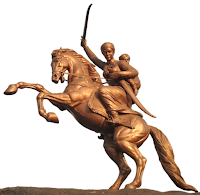


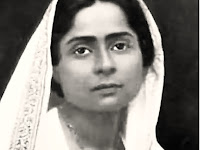

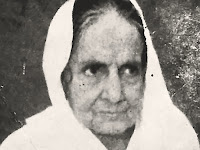
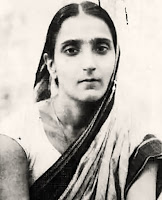
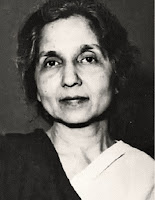




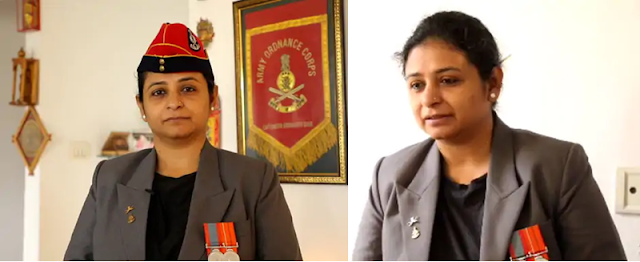




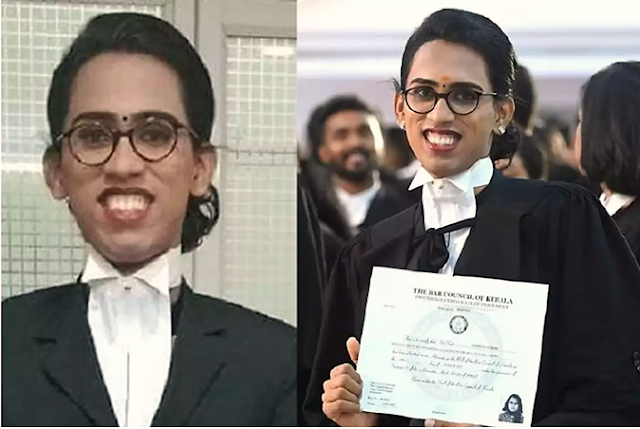



Comments